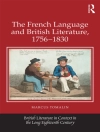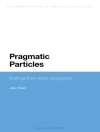This book addresses recent developments in the study of tense from a cross-paradigm and cross-linguistic point of view. Leading international scholars explore challenging ideas about tense at the interfaces between semantics and syntax as well as syntax and morphology. The book is divided into three main subsections: 1) Tense in tenseless languages; 2) Tense, mood, and modality, and 3) Descriptive approaches to some tense phenonema. Although time is a universal dimension of the human experience, some languages encode reference to time without any grammatical tense morphology of the verb. Some of these exceptional “tenseless” languages are investigated in this volume: Kalaallisut, Paraguayan Guaraní and Movima. Modal verbs are polyfunctional in the sense that they express both tense and modality. In this volume, an untypical modal is analyzed, a modal analysis of imperatives is argued for, and sentential mood, which is closely related to modality, is analyzed. It is always interesting to look at the expression of tense in understudied languages, which is done here for Scottish Gaelic, Austronesian Rukai and German dialects. The volume can be used for graduate and undergraduate level teaching
Sobre el autor
Renate Musan, Universität Osnabrück; Monika Rathert, Bergische Universität Wuppertal.












